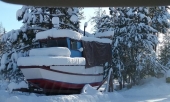
 6
6




 2
2




John Daley Bendigo, Australia The Enemy of progress is the hope of a perfect plan
Benefits of rainfall collection https://permies.com/t/88043/benefits-rainfall-collection
GOOD DEBT/ BAD DEBT https://permies.com/t/179218/mortgages-good-debt-bad-debt
 1
1




John C Daley wrote:Are you a local, they may have designs and techniques that suit your area

 7
7





How Permies works: https://permies.com/wiki/34193/permies-works-links-threads
My projects on Skye: The tree field, Growing and landracing, perennial polycultures, "Don't dream it - be it! "
 4
4




Nancy Reading wrote:I found an architecture site discussing African Taita vernacular housing and I can see that the designs work well in that climate.

source
 8
8




John Daley Bendigo, Australia The Enemy of progress is the hope of a perfect plan
Benefits of rainfall collection https://permies.com/t/88043/benefits-rainfall-collection
GOOD DEBT/ BAD DEBT https://permies.com/t/179218/mortgages-good-debt-bad-debt
 2
2




John C Daley wrote:First things to consider doing on your land.
- start planning tree locations prepare soil and plant.
- study land and determine house location
- do rudimentary soil tests
- study books or read tutorials about cob, also known as mudbrick or adobe.
- consider water catchment from roof, a square corrugated iron roof can be installed on a circular building
- think about septic tank location and construction style
 3
3




Additionally, I’m curious about the comparison between plaster and mud bricks – which one is considered better for the construction, both in terms of effectiveness and durability?
John Daley Bendigo, Australia The Enemy of progress is the hope of a perfect plan
Benefits of rainfall collection https://permies.com/t/88043/benefits-rainfall-collection
GOOD DEBT/ BAD DEBT https://permies.com/t/179218/mortgages-good-debt-bad-debt
 3
3




 5
5




John Daley Bendigo, Australia The Enemy of progress is the hope of a perfect plan
Benefits of rainfall collection https://permies.com/t/88043/benefits-rainfall-collection
GOOD DEBT/ BAD DEBT https://permies.com/t/179218/mortgages-good-debt-bad-debt
 3
3




 4
4




Hime Kiki wrote:Apologies for any confusion. I meant to inquire about the difference between mud bricks and cob, specifically in terms of suitability for a hot humid climate.
Invasive plants are Earth's way of insisting we notice her medicines. Stephen Herrod Buhner
Everyone learns what works by learning what doesn't work. Stephen Herrod Buhner
 6
6




 6
6




 9
9




 2
2





|
Mine! Mine! Mine! Here, you can have this tiny ad:
The new purple deck of permaculture playing cards
https://www.kickstarter.com/projects/paulwheaton/garden-cards
|



